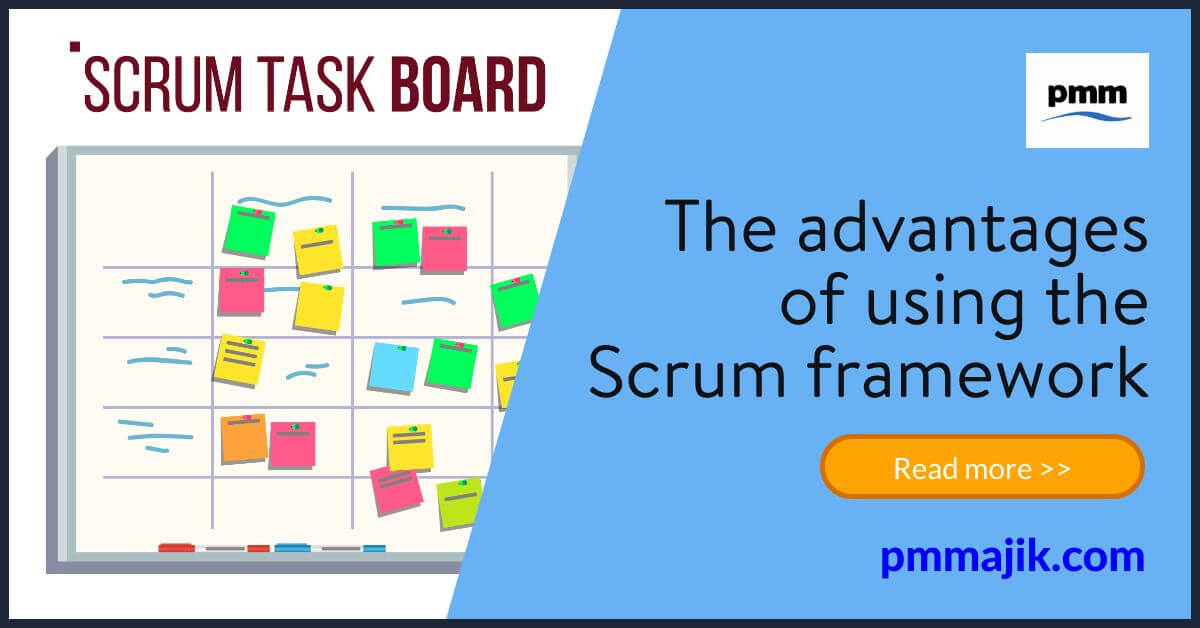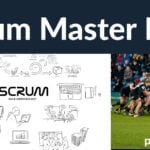In the last couple of decades, the Scrum framework for project management has become ever more popular. It’s a methodology for running an agile project and has some strict structures and strongly defined roles.
It may be a popular way to run projects, but what are the advantages of using the Scrum framework to manage your project? We’re going to look at:
- The types of projects suited to using Scrum
- How Scrum will positively affect your projects
- Some of the pitfalls of the Scrum method
Helping you decide if Scum is going to be the right choice for your project.
When should I use Scrum?
Scrum works great for certain types of projects. It’s a very well-defined method that works great in particular circumstances but is by no means a one-size-fits-all solution to project management.
Your project is suitable for Scrum when:
- All of the team work from the same location
- Your team is made up of highly skilled experts
- The project requirements aren’t well defined at the start
- You’re working in a fast-paced market
You should also ensure you’ve got the right people for the key roles of product owner and Scrum Master. Without experienced people to fill these roles, the Scrum project is unlikely to stay on track.
What’s the business case for Scrum?
Speed
In a Scrum project, things get delivered fast. Sprints, where the deliverables are developed, are short and last between two to four weeks. Items in the Sprint backlog are cleared simultaneously and new learning is done on the job. Developments are also tested as they are made, rather than in one batch at the end of the project.
Adaptability
The fifteen-minute Daily Scrum meeting allows for regular updates in requirements. Scrum projects are responsive to changing market conditions or requirements. New challenges can be plugged into the existing backlog without having to remaster large plans.
Productivity
It’s the product owner’s job to prioritise tasks in the Sprint backlog. Because there’s a clear priority assigned to tasks, the ones that add the most value and help the product get to market get dealt with first. This can get a faster and bigger return on investment. Developments can also be put on the market as they come rather than having to wait for the project to complete, driving success.
Motivational
The Sprint team needs to come together to get the project delivered. The framework encourages collaboration and promotes collective responsibility for all tasks, empowering your workers. Team members also have lots of scope to learn new skills as they assist in tasks outside of their field – a big motivator for workers.
Innovative leadership
In a Sprint, there is no boss. It’s up to the team to self-organise and get the Sprint backlog cleared in the set timeframe. Although there is the role of the Scrum Master, this person acts like a mentor and facilitates the Daily Scrum, discussing what’s going well and what needs support rather than dictating tasks. It can help you identify future leaders in your organisation.
Satisfied users
Getting the project delivered fast should lead to a satisfied client at the end. Even during the process, the client has the chance to provide updates that can be raised in the Daily Scrum. The whole set up of Scrum, with the Scrum review at the end, means that the client can give feedback and work with one point of contact – the product owner.
What are the negative aspects of Scrum?
By all means, Scrum isn’t a perfect system by which all projects should be run. There are things that Scrum doesn’t deal with well, some of those issues are:
- Scope creep due to the lack of initial requirements
- Remote teams aren’t suited to the method
- For teams of more than nine it can become unwieldy
- Team members can find the regular meeting laborious
- A team member leaving the company during a project causes big issues
The take home
There are many things that Scrum does exceedingly well, and if your project fits the framework it should be a success with good leadership through the Scrum Master and the product owner.
The advantages of using Scrum Framework relate not only to your business getting a better return on investment, but also improves your team members, and will lead to a more satisfied end user.






